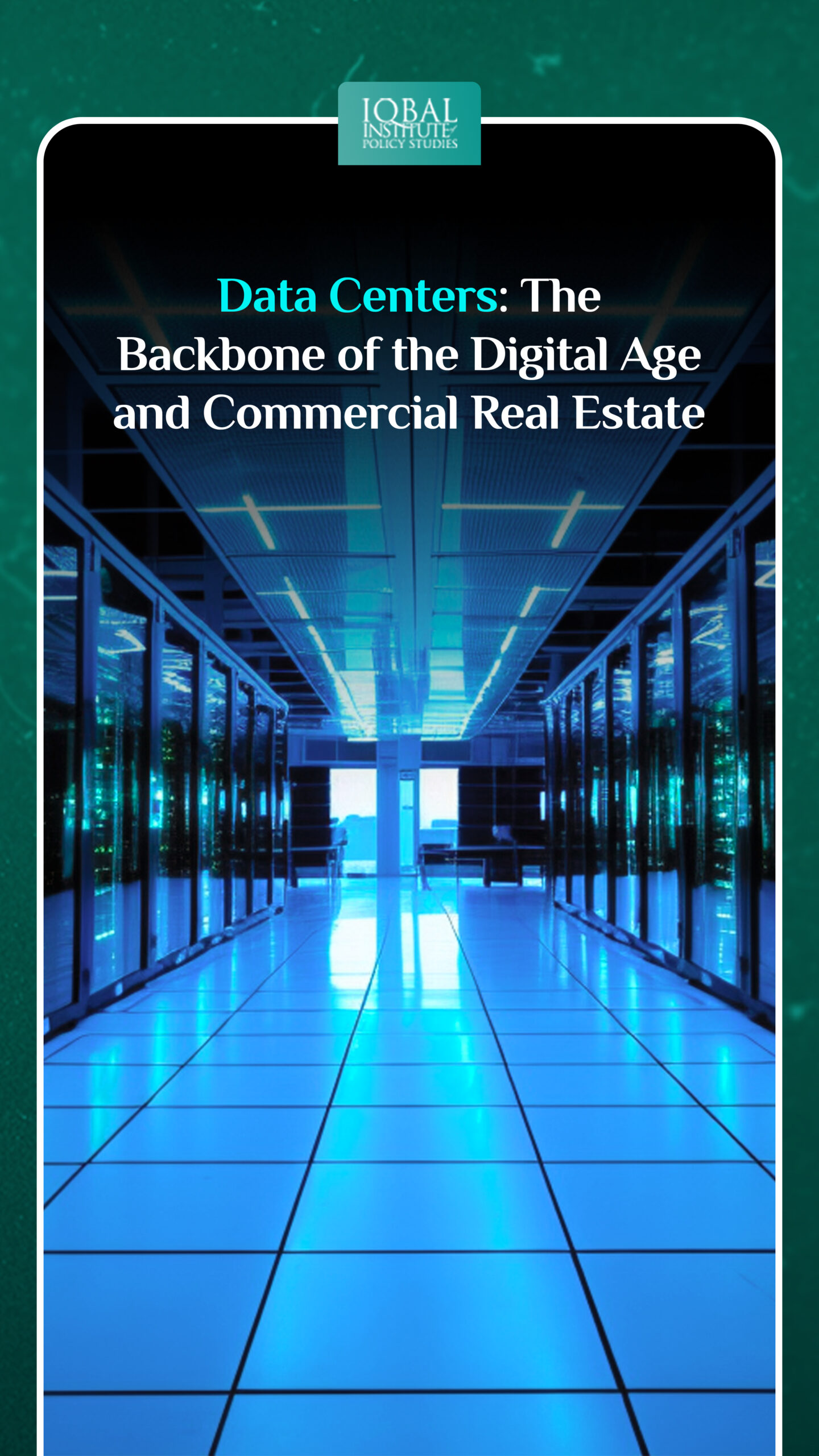In today’s fast-paced digital era, where every facet of our lives is intertwined with technology, data centres are crucial as the unsung heroes powering this technological revolution. They are the backbone of the digital age, ensuring that the vast amount of data generated and consumed daily is stored, processed, and delivered efficiently and reliably. Simultaneously, the emergence and growth of data centres have profoundly impacted the commercial real estate landscape, driving demand for specialized properties and reshaping how businesses view their real estate strategies.
Understanding Data Centers
At the heart of the digital age, data centres stand as the unheralded architects of our interconnected world. These specialized facilities represent the physical embodiment of the virtual realms we navigate daily. Within their meticulously designed walls reside the nerve centres that store, process, and distribute the staggering amount of data that fuels our modern lives. Comprising an intricate ecosystem of servers, networking components, and advanced cooling systems, data centres create an environment where information is safeguarded, computations are executed at lightning speed, and digital services are seamlessly delivered. Their significance goes far beyond the realm of technology, extending their reach into the fabric of commercial real estate, where they’ve triggered a seismic shift in demand, reshaped urban development, and spurred innovative adaptations of existing structures. To truly comprehend the transformational impact of data centres on our digital landscape and the world of commercial real estate, it’s imperative to delve into the core of these technological powerhouses.
Functions of Data Centers
The primary functions of data centres can be summarized as follows:
Data Storage and Management
Data centres store and manage vast information volumes, from personal photos and videos to critical business data and applications.
Processing Power
They host the computational power necessary to run complex algorithms, perform data analytics, and deliver cloud-based services.
Network Connectivity
Data centres facilitate high-speed connectivity, enabling seamless communication between different devices and services across the globe.
Redundancy and Reliability
Many data centres are designed with redundancy in mind to ensure continuous operation, even in the face of hardware failures or other disruptions.
The Importance of Data Centers
Data centres are pivotal for numerous aspects of modern life:
Business Operations
Enterprises rely on data centres to store customer information, process transactions, manage supply chains, and more.
Cloud Services
Cloud platforms, like Amazon Web Services (AWS), Microsoft Azure, and Google Cloud, depend on data centres to deliver a wide array of services, from hosting websites to providing AI and machine learning resources.
Digital Entertainment
Streaming services for movies, music, and games, as well as social media platforms, all depend on data centres to deliver content seamlessly to users.
Research and Innovation
Data centres support scientific research, simulations, medical breakthroughs, climate modelling, and space exploration.
The Nexus with Commercial Real Estate
The proliferation of data centres has sparked a transformation in the commercial real estate sector. Here’s how:
Increased Demand for Space
The substantial physical infrastructure required by data centres has led to a surge in demand for commercial real estate properties that can accommodate them. This has created a new market segment within the real estate industry.
Location Matters
Data centres are strategically located to minimize latency and ensure efficient data delivery. As a result, they often drive demand for properties in areas with suitable infrastructure, such as reliable power sources and fibre-optic connectivity.
Adaptive Reuse
Data centres are often established in repurposed properties, such as warehouses or industrial facilities. This adaptive reuse revitalizes underutilized spaces and brings new life to older buildings.
Economic Impact
Establishing data centres contributes to the local economy by creating jobs for construction, operations, and support services. Additionally, data centres can attract businesses that seek proximity to robust digital infrastructure.
Challenges and Future Trends
While data centres bring numerous benefits, they also face challenges:
Energy Consumption
Data centres are power-hungry due to the need for cooling systems and constant operation. There’s a growing focus on making data centres more energy-efficient and environmentally sustainable.
Security Concerns
As repositories of vast amounts of sensitive information, data centres are vulnerable to cyberattacks. Strengthening cybersecurity measures is crucial.
Regulatory Landscape
The regulatory environment surrounding data privacy and sovereignty affects data centre operations. Compliance with laws like GDPR (General Data Protection Regulation) adds complexity.
Future trends in data centres and their impact on commercial real estate include
Edge Computing
Edge data centres are emerging to process data closer to its source, reducing latency and improving real-time processing for applications like IoT (Internet of Things) devices.
Renewable Energy Integration
Data centres increasingly adopt renewable energy sources to reduce their carbon footprint and dependence on traditional power grids.
5G Integration
The rollout of 5G networks will likely prompt the establishment of more edge data centres to support the low-latency requirements of new applications.
Conclusion
Data centres have evolved from mere IT infrastructure to the driving force behind the digital age. They enable businesses to innovate, users to access services seamlessly, and society to progress. Their symbiotic relationship with commercial real estate has transformed how properties are utilized and opened up new avenues for economic growth. Understanding their significance is crucial for individuals and businesses as data centres evolve and reshape the technological and real estate landscapes
This article is written by Radma Nouman. Radma is a research analyst at the Iqbal Institute of Policy Studies (IIPS).



Leave a Reply